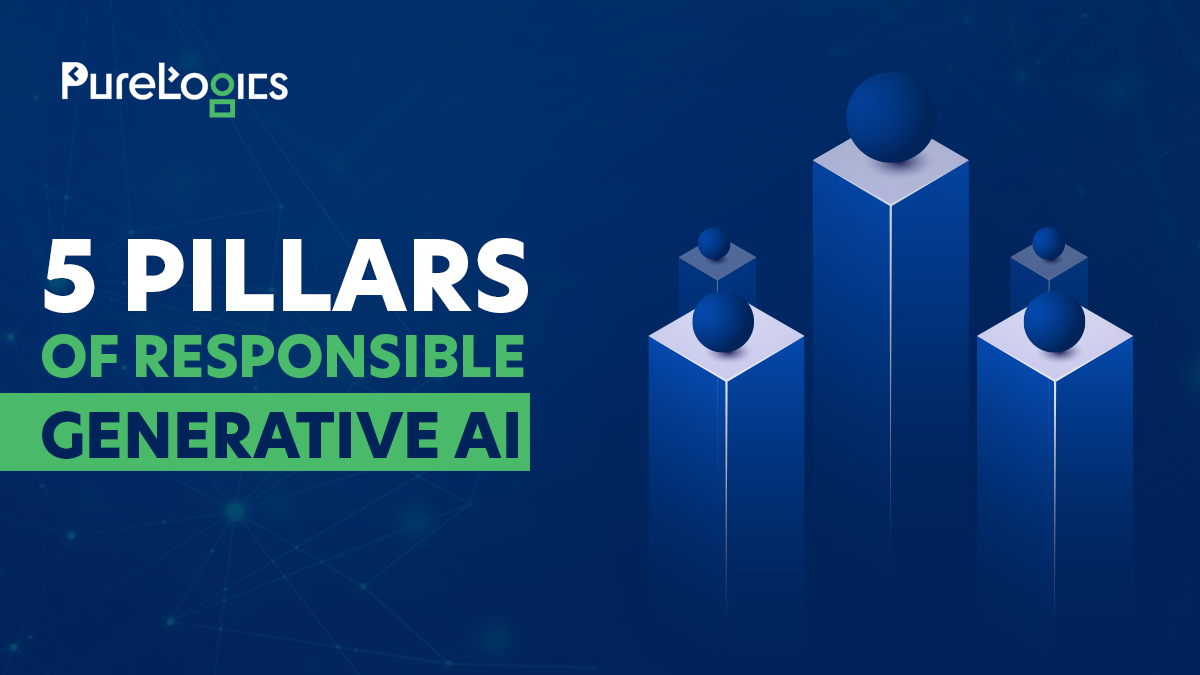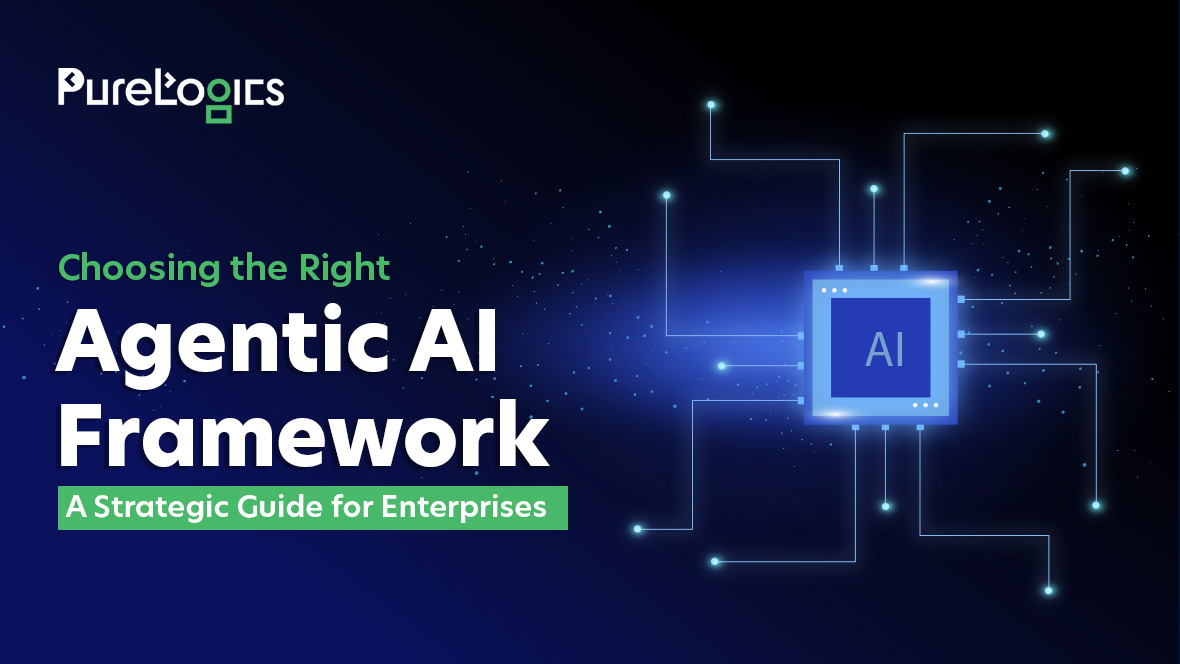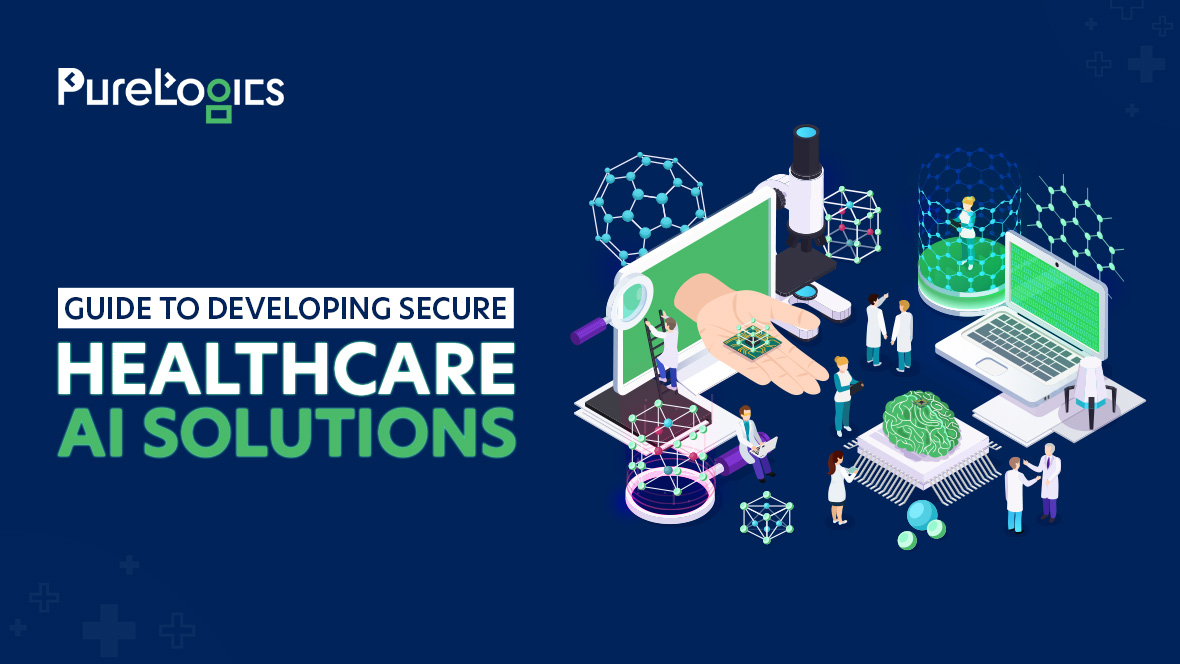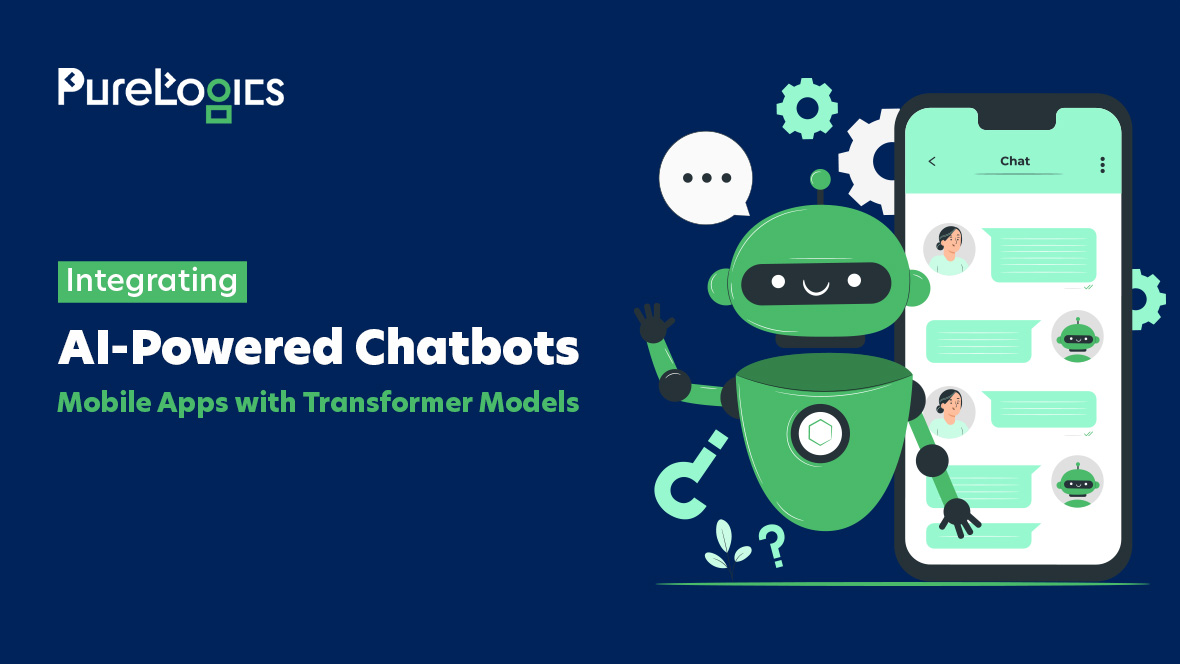Generative AI is at the forefront of today’s technological advancements. It creates content, generates data, and even simulates human-like interactions. GenAI is powerful, but with great power comes a huge responsibility. GenAI’s ethical implications are profound as they influence privacy, security, as well as societal norms. So, to ensure that GenAI always benefits humanity, a strong code of ethics is mandatory.
In this blog post, we have explored the five pillars of responsible generative AI. These pillars will provide developers, policymakers, and users with a comprehensive framework. So, without any further ado, let’s dive into the topic!
Worried about the ethical implications of AI?
Let us help you navigate the complexities with our responsible AI development services.
1. Transparency and Explainability
Transparency
Transparency is the prerequisite of ethical AI development and usage. It includes clear communication about how an AI system operates, how to use the data, and how to employ it for decision-making. For GenAI, transparency means:
Open Disclosure: Developers should openly disclose the AI system’s algorithms and processes. This includes providing accessible documentation and resources that explain the anatomy of these AI systems.
Data Sources: Clearly identifying the data sources used for training models is also very important. Users should have knowledge of the source of data. This will ensure that data compilation has properly followed the data protection laws.
Explainability
Explainability goes hand-in-hand with transparency. It refers to the ability to understand and interpret how AI systems reach their conclusions. Explainability consists of:
User-Friendly Explanations: Providing explanations that non-experts can understand is vital. This could involve visual aids, analogies, or simplified technical descriptions.
Auditability: AI systems should be designed in a way that they allow independent and transparent audits. This makes sure that the AI systems are not producing harmful results.
2. Fairness and Non-Discrimination
Bias Mitigation
GenAI developers must design systems with a goal to minimize and eliminate all kinds of biases. The following are the key practices for bias mitigation:
Diverse Data Sets: Using diverse data sets to train models decreases the chances of bias. GenAI developers must proactively seek out underrepresented groups when collecting data for AI systems.
Bias Testing: They should also perform continuous testing for AI systems to eliminate biases. Continuous bias testing will help them implement the required measures in a timely manner when biases are identified. This process includes algorithmic adjustments, data rebalancing, etc.
Inclusive Design
AI should be inclusive and accessible to all individuals. The background or abilities of the individuals shouldn’t be the criteria. The following are key inclusive design practices:
User-Centered Design: Engaging with diverse user groups during the design and development phases to ensure the AI system meets their needs.
Accessibility Features: Incorporating features that make AI accessible to people with disabilities, such as text-to-speech, voice recognition, and adjustable interface settings.
3. Accountability and Governance
Responsibility
GenAI development companies must take responsibility for the impacts and results of the GenAI systems. This involves:
Clear Accountability: A company must establish transparent lines of accountability within organizations. This includes designating individuals or teams responsible for overseeing AI ethics and compliance.
Impact Assessments: Impact assessments must also be conducted on a regular basis. The assessments will evaluate the social, economic, and environmental effects of your AI systems. This will help developers identify all the potential risks and areas for improvement.
Regulatory Compliance
Moreover, it is non-negotiable to comply with the present laws and regulations. AI technologies evolve on a regular basis, so your regulatory frameworks should also evolve. The following are key considerations:
Legal Standards: Ensuring AI systems comply with data protection laws, such as GDPR or CCPA, and industry-specific regulations.
Ethical Guidelines: The developers must also adhere to industry best practices and ethical guidelines, even when there are no formal regulations. This proactive approach shows a commitment to ethical and responsible AI.
4. Privacy and Security
Data Protection
Protecting the privacy of individuals is paramount in the development and deployment of generative AI. This involves:
Anonymization: The developers should also Implement techniques to anonymize data. It will ensure that individuals cannot be identified from the data used by GenAI systems.
Data Minimization: Collecting only the data necessary for the intended purpose. This reduces the risk of data breaches and unauthorized access.
Security Measures
Robust security measures are essential to protect AI systems. The following are key practices you must consider:
Encryption: Always use encryption to protect data at rest and in transit.
Regular Audits: Conducting regular security audits and vulnerability assessments to identify and mitigate potential threats.
5. Human-Centric Approach
Empowering Users
Your GenAI systems must also empower users and enhance human capabilities rather than replace them. This includes:
Augmentation: Designing AI systems that augment human skills and decision-making, providing tools and insights that help users achieve their goals.
User Control: The developers should also give users control over AI systems. This will enable them to make adjustments and override automated decisions when it is needed.
Ethical Use Cases
Focusing on ethical and socially beneficial use cases ensures that generative AI serves the greater good. The ethical use cases include:
Positive Impact: Prioritizing projects that have a positive impact on society, such as healthcare, education, and environmental sustainability.
Avoiding Harm: Avoiding applications that can cause harm or exacerbate social inequalities, such as surveillance or manipulative advertising.
Is your AI as responsible as it is innovative?
Elevate your AI projects with our commitment to ethical practices.
Conclusion
GenAI development and deployment present both immense opportunities and significant ethical challenges. By adhering to these five essential pillars—transparency and explainability, fairness and non-discrimination, accountability and governance, privacy and security, and a human-centric approach—we can construct a foundation for responsible AI.
We at PureLogics have been providing responsible generative AI services for 19+ years of experience+ years. We have assisted many startups and large enterprises in building and deploying GenAI systems.
Are you ready to lead in responsible GenAI development? Give us a call now. We offer a free 30-minute consultation call. Drop a message; our representative at PureLogics will get in touch with you shortly.


 [tta_listen_btn]
[tta_listen_btn]
 August 23 2024
August 23 2024






